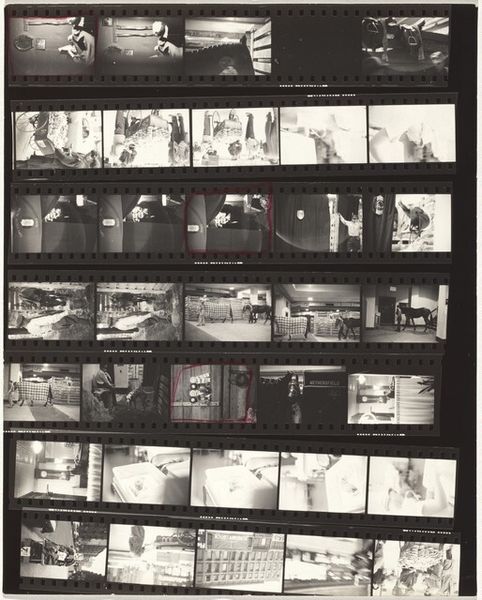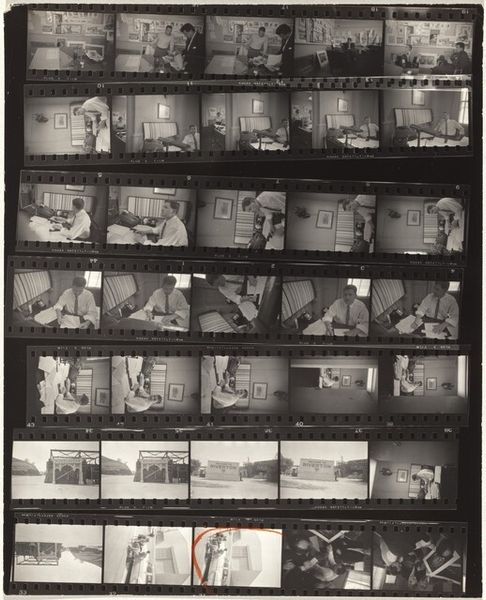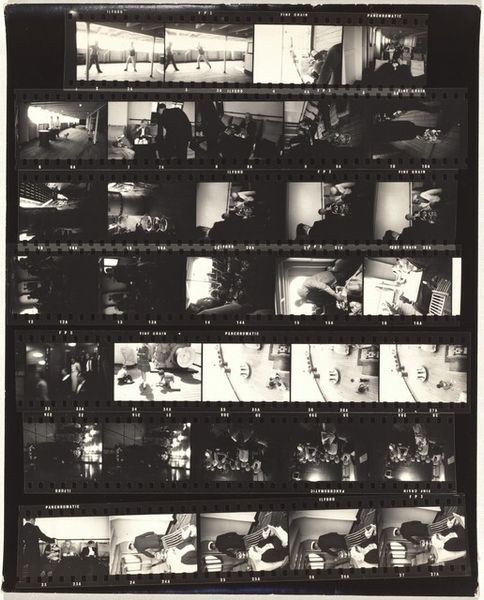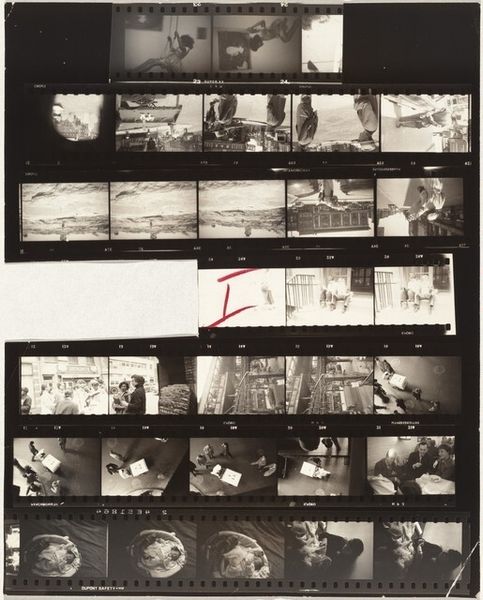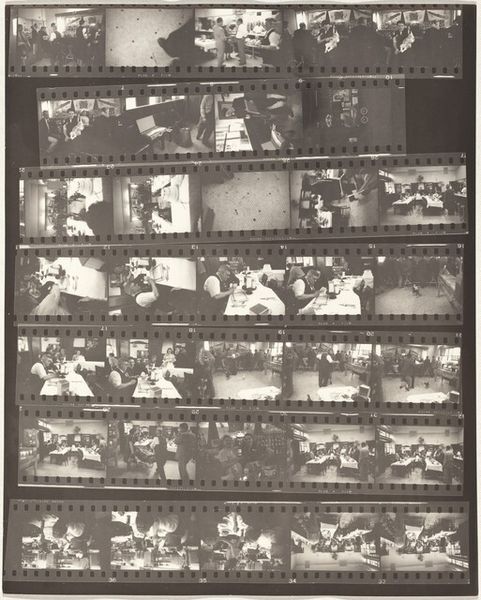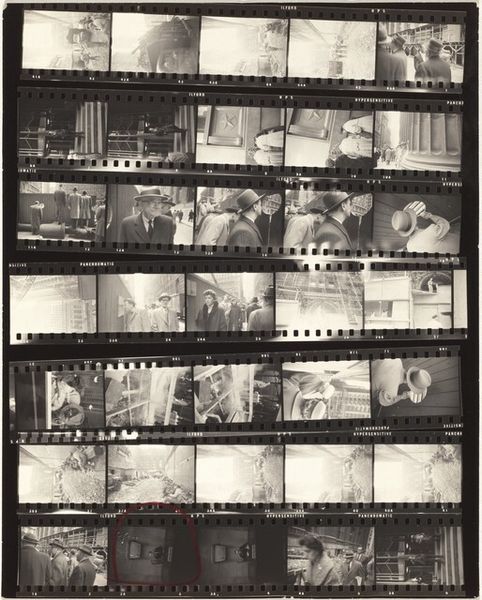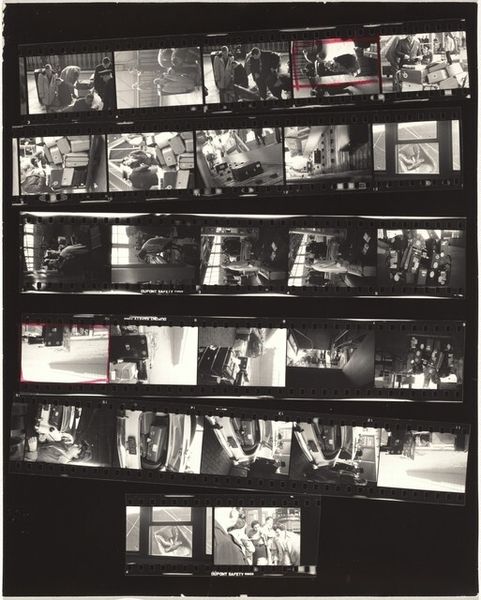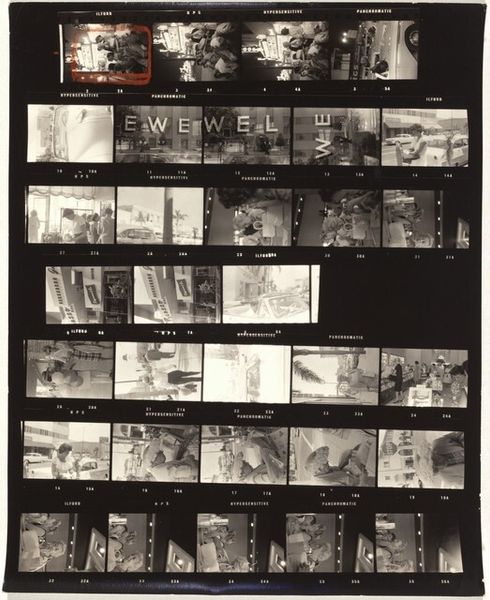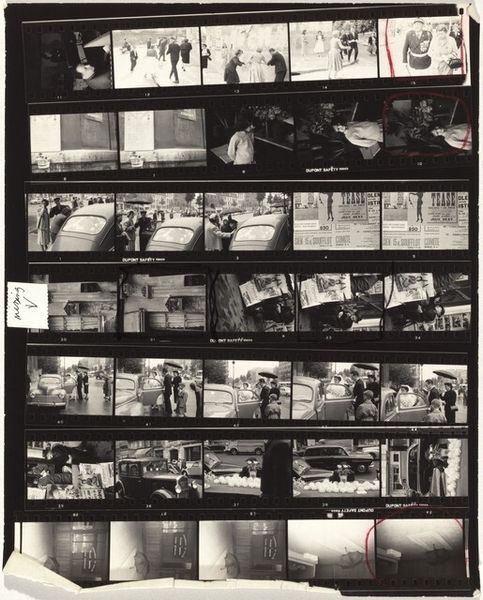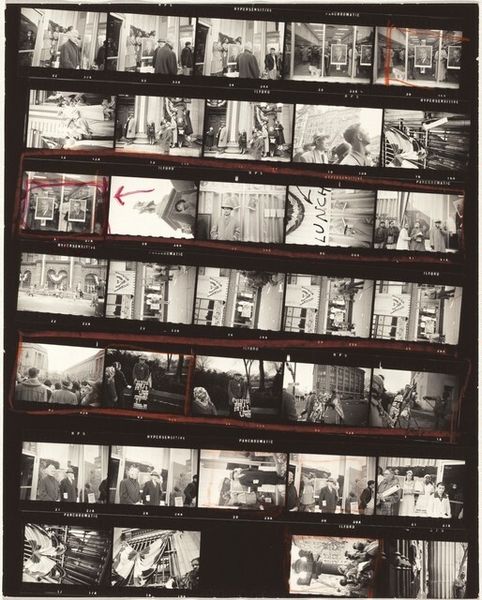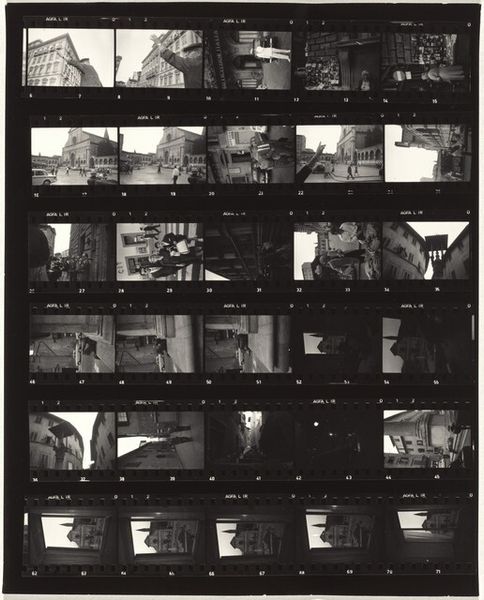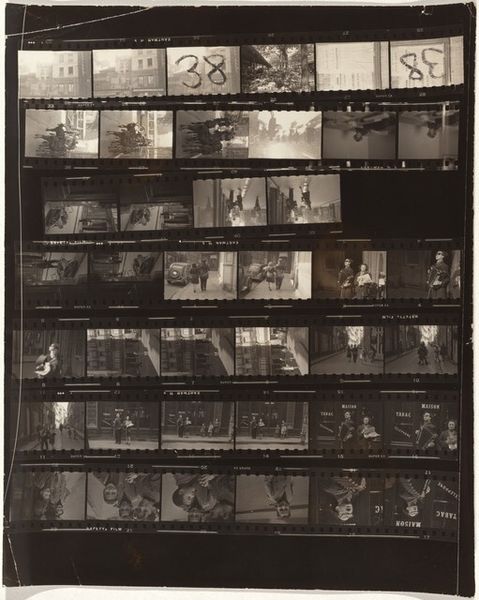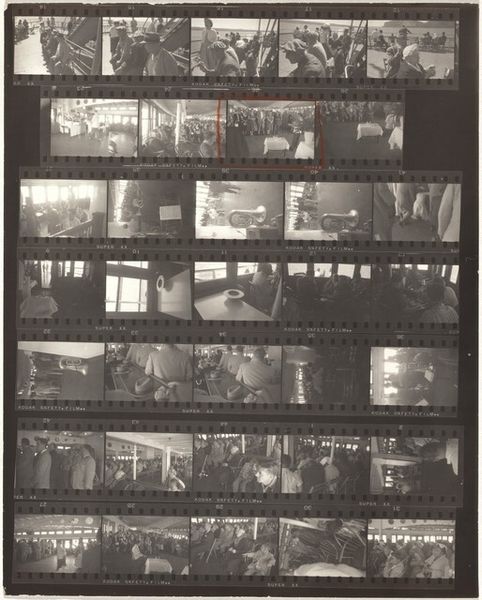
contact-print, photography, gelatin-silver-print
#
film photography
#
landscape
#
contact-print
#
photography
#
visual diary
#
gelatin-silver-print
#
modernism
#
realism
Dimensions: sheet: 25.3 x 20.2 cm (9 15/16 x 7 15/16 in.)
Copyright: National Gallery of Art: CC0 1.0
Editor: This is "Hershey story 6," a 1956 gelatin-silver print contact sheet by Robert Frank. The repetitive images, these rows of captured moments...it feels almost like a machine itself, reflecting on industry. What do you see in this piece? Curator: I see a critique embedded within this photographic structure. Contact sheets weren't usually displayed; they were working documents. By presenting this, Frank makes the usually invisible labour of image-making visible. But more than that, I wonder what is he saying about labor in post-war America by documenting the Hershey factory, and packaging the contact sheet itself. Editor: I didn't think about it that way, the presentation as part of the message itself. But how does that critique manifest visually? Curator: Consider the repetition you mentioned: rows of workers, similar poses, a kind of visual monotony. How might that reflect the experience of labor itself? And who gets to be represented and who doesn’t? Note that many of the close-ups, near the middle, appear to isolate and spotlight individual people. What’s being communicated there? Editor: That is really clever use of the medium! It spotlights individuals who appear to be trapped, and even engulfed in their labor, and other photos offer more human-scale moments. It's like the contact sheet captures multiple levels of their lived experience at work. It makes me question my assumptions about industrial progress and human cost. Curator: Precisely! Frank's work invites us to question the social narratives constructed through images. Photography isn't just a mirror; it's a critical tool, right? Editor: I agree! I never thought of the visual monotony reflecting work, but that seems clear. Now I think it is about the work, its impact and implications of the manufacturing industry and its visual language. Thanks! Curator: My pleasure. Looking closely and thinking contextually changes how we engage with art.
Comments
No comments
Be the first to comment and join the conversation on the ultimate creative platform.
